Activating Public Space
Calling for a shift from technologies of static representation to systems for creation and performance in computationally-augmented public spaces.
Including excerpts from one of FoAM’s first conference papers, From Representation to Performance, published in the proceedings of the DIAC Symposium in Seattle in 2000, on Shaping the Network Society and the future of the public sphere in cyberspace.
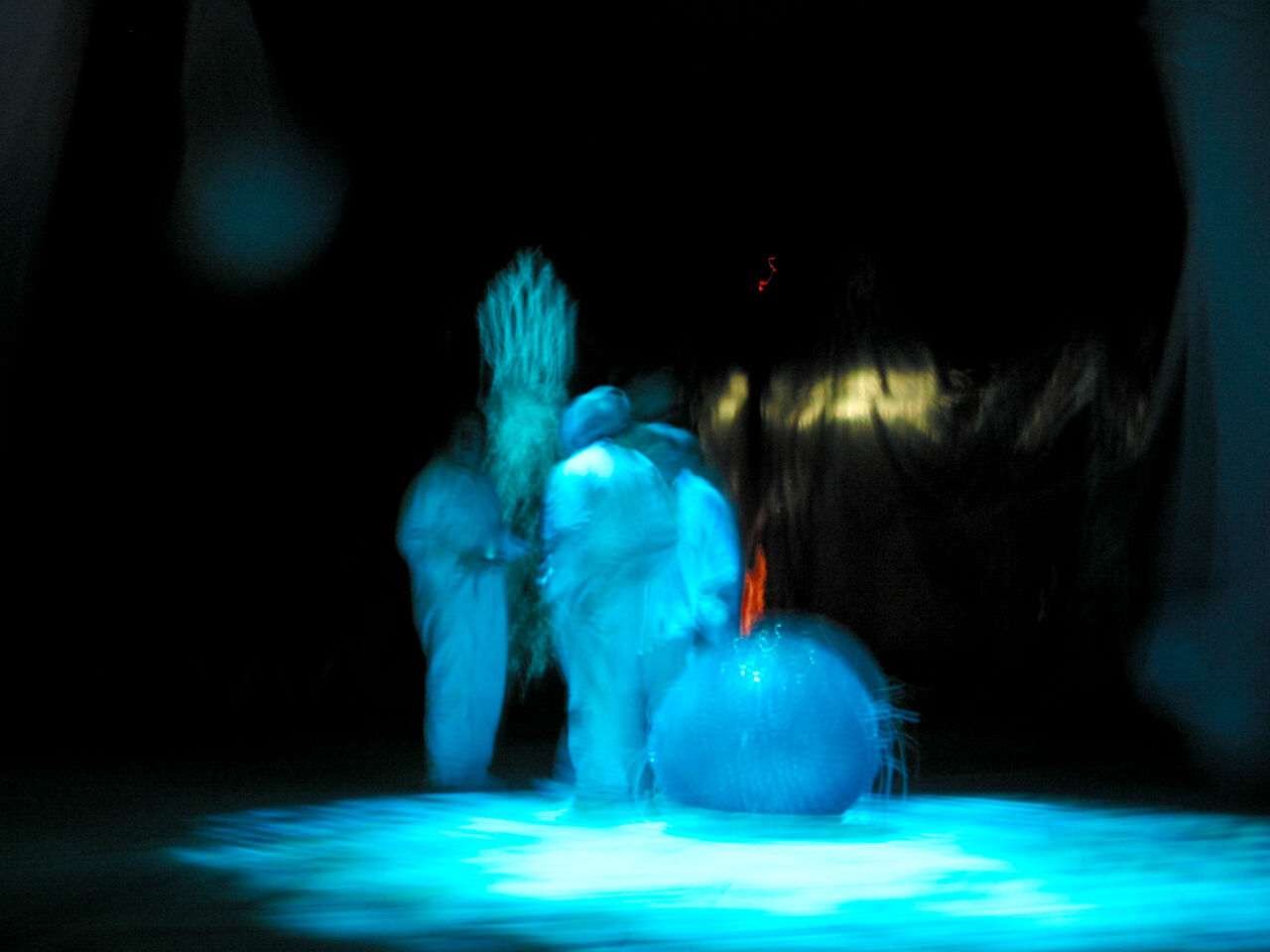 tx0om responsive environment, The Hippodrome Circus, Great Yarmouth, UK, 2002
tx0om responsive environment, The Hippodrome Circus, Great Yarmouth, UK, 2002
In the year 2000, the utopian promises of the internet and cyberspace as new, democratic public realms were being confronted with the realities of corporate control, surveillance, and the flattening of human experiences into data flows. While cyberpunk and early visions of virtual reality had painted digital spaces as immersive, endlessly malleable, borderless worlds where identities and social norms could be radically reimagined, this sense of virtuality superseding the physical gave little consideration to the versatility and social thickness of existing public spaces. There weren’t many signs that digitally enhanced public spaces would build on their culturally rich heritage. Dominant paradigms of the time, such as cybernetics and information theory, reduced the public sphere into abstractions of the market or the agora. As people were starting to grapple with the implications of computational technologies and their impact on human interactions and communities, it was (and still is) vital to explore other ways of being public.
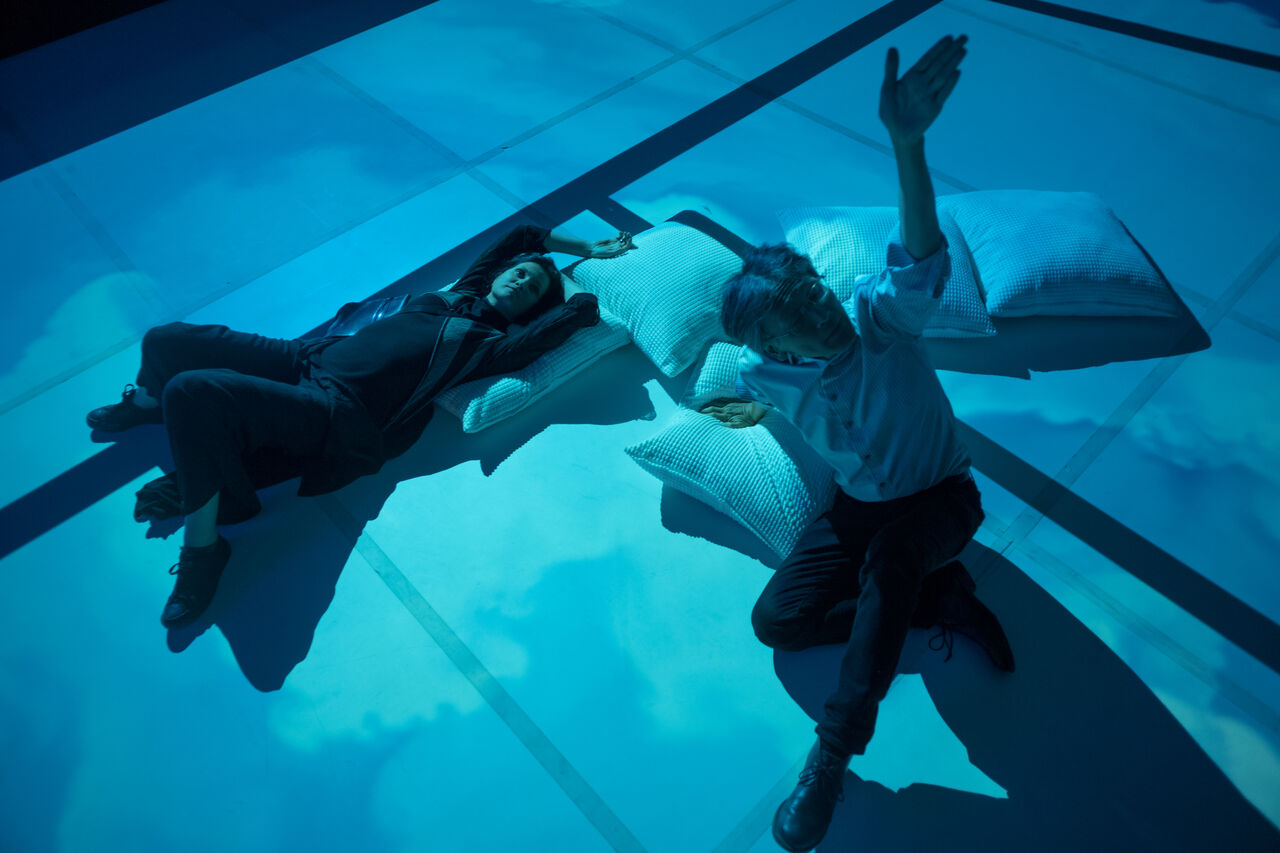 17 years later, the authors at the Synthesis Center of the Arizona State University, Tempe, USA, 2017
17 years later, the authors at the Synthesis Center of the Arizona State University, Tempe, USA, 2017
What is the public sphere in cyberspace?
What should the public sphere in cyberspace be?
What should we do with the public sphere in cyberspace?
What can we do with the public sphere in cyberspace?
In the long and rich history of public spaces, the spectrum of public action is much richer than what we typically see in modern informatic abstractions of the market and the agora. What if we make the move from maintaining representations of society to performing socially, and gain more supple ways of building and inhabiting settings for public activity?
Problematic promises: cybernetics and information theory
How does the cybernetic penetration of daily life influence the public sphere? In the last few decades we have witnessed the penetration of cybernetic and information-theoretic habits of thought far beyond their original domains. "Languaging" has now been replaced by the exchange of data, of information about events. Information, the universal solvent that reduces all forms of human experience to equivalencies. Overloaded with information, we circle, as lost satellites, around a decentralised freedom.
What’s public in public spheres?
What examples from history can we draw on for alternative ways of being public? The debate about what constitutes public spaces and the activities that evolve in them is not new. Every society infected by the notion of the Greek polis has its own ambivalent relationship with the concept of public space. Public space is necessary to mediate a community, yet it also has a great subversive power. Historically, public spaces were not only a home to sellers, buyers and news-broadcasters, but also to alternatives, radicals, thieves and jesters. In great public spaces the whole community contributes to build a place where both personal and public memories can be stored and reused, a place that ties society together in rituals and commons.
A few suggestions...
- Agora, classical basis for western democratic polis;
- Pre-capitalist Market, base of an exchange economy between different communities;
- Renaissance Italian Piazza, meeting place where most of the everyday life took place;
- Garden, place for reconciliation, meditation and interaction with people and nature;
- Street used not as a transport conduit, but as a locus of experiencing the neighbourhood in time;
- Fair or Festival, itinerant public event, a celebration and ritual that adapts to different local conditions;
- Mediaeval Circus, a carnival, a parade of (tolerated) difference;
- Situationists' Drift, including psychogeographic experiments and playful approaches to urbanism.
What if we considered contemporary public spaces as domains of synchronicity, speech-action and commitment? Socially and culturally rich public spaces include material resistances, territory, temporality, repetition and ritual, reciprocity and empathy, the aesthetic span between logic and sensuality. Paying attention to these aspects could transform contemporary interactive experiences. They could be guided by temporal rhythms of emergence and disappearance. They could become synergies of an eerie ambience, colours, sounds, scents, change and exchange, memory, prophecy and (ecstatic) dance. The language of these spaces would be alive and shared among their participants, not owned by anyone, but spontaneously generated by everyone, in all variety of individual argot.
What aspects of these spaces could inform how we approach virtual, augmented and mixed reality spaces?
Consider how the COVID-19 pandemic reshaped the relationship between physical and digital public spaces. What new hybrid forms emerged, and what does this suggest about the future(s) of public life?
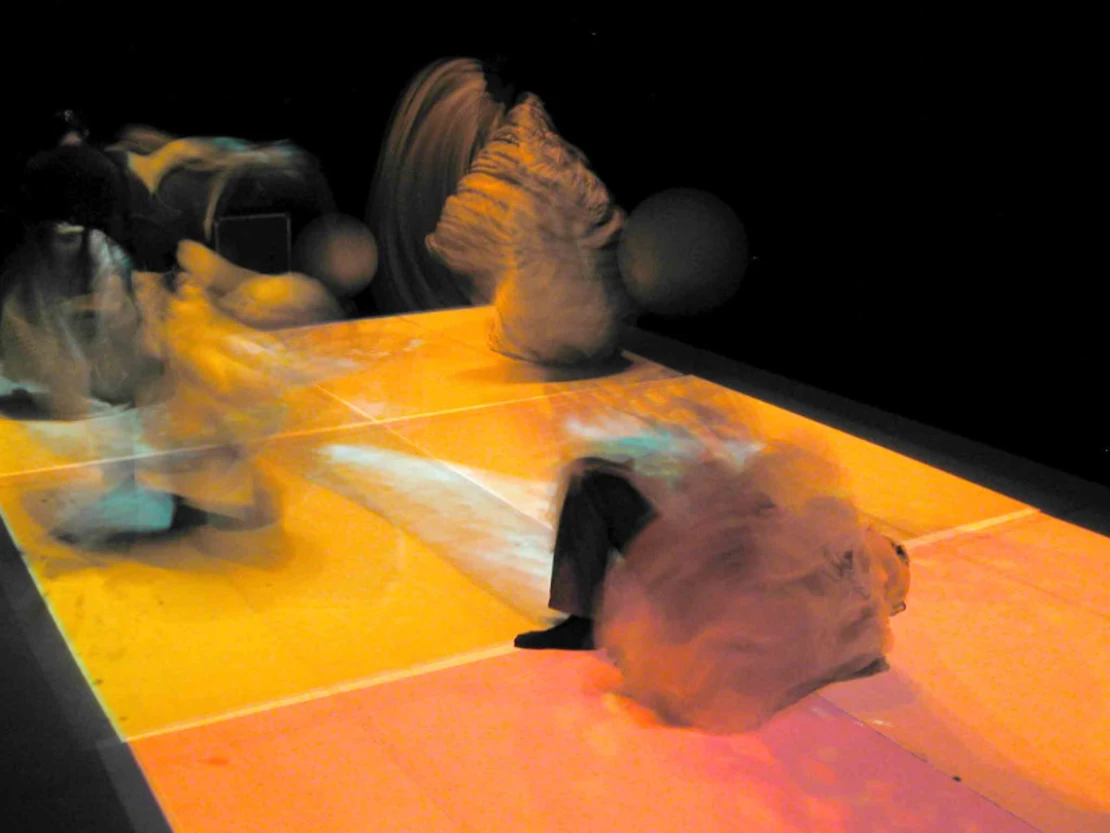 TGarden responsive environment, V2, Rotterdam, The Netherlands, 2001
TGarden responsive environment, V2, Rotterdam, The Netherlands, 2001
From Describing to Performing
This was our paradox: no course of action could be determined by a rule, because every course of action can be made out to accord with the rule. The answer was: if everything can be made out to accord with the rule, then it can also be made out to conflict with it. And so there would be neither accord nor conflict here.Ludwig Wittgenstein
Wittgenstein’s rule-following paradox is a good starting point to talk about a public space that is constructed by its participants, on the fly. All social forms have rules and conventions, some of which are followed pretty strictly even if they are tacit. However, these rules might not be chains or shells encasing our activity, but rather collective agreements arising after the fact, emerging as conventions in the course of play. Rules as constructed by newcomers to the game, for the newcomers' benefit, as a way to summarise history. Rules as scaffolding to enable the players to improvise against a provisional framework, and reach beyond the scope of their past activity if they desire.
The process of unfolding goes step by step, one pattern at a time. Each step brings just one pattern to life; and the intensity of the result depends on the intensity of each one of these individual steps.Christopher Alexander
Christopher Alexander views each space as alive with events that were scaffolded by the geometry of that space. Schematising Alexander's description, the geometry of a place gives a shape to the imagination of the inhabitant, the imagination inspires the behaviour, and the behaviours build the event. To create such patterns for technologically augmented public spaces, we'd have to shift the focus of design from technologies of static representation (snap-shot database schemas with data from forms, for example), to technologies of creation and performance.
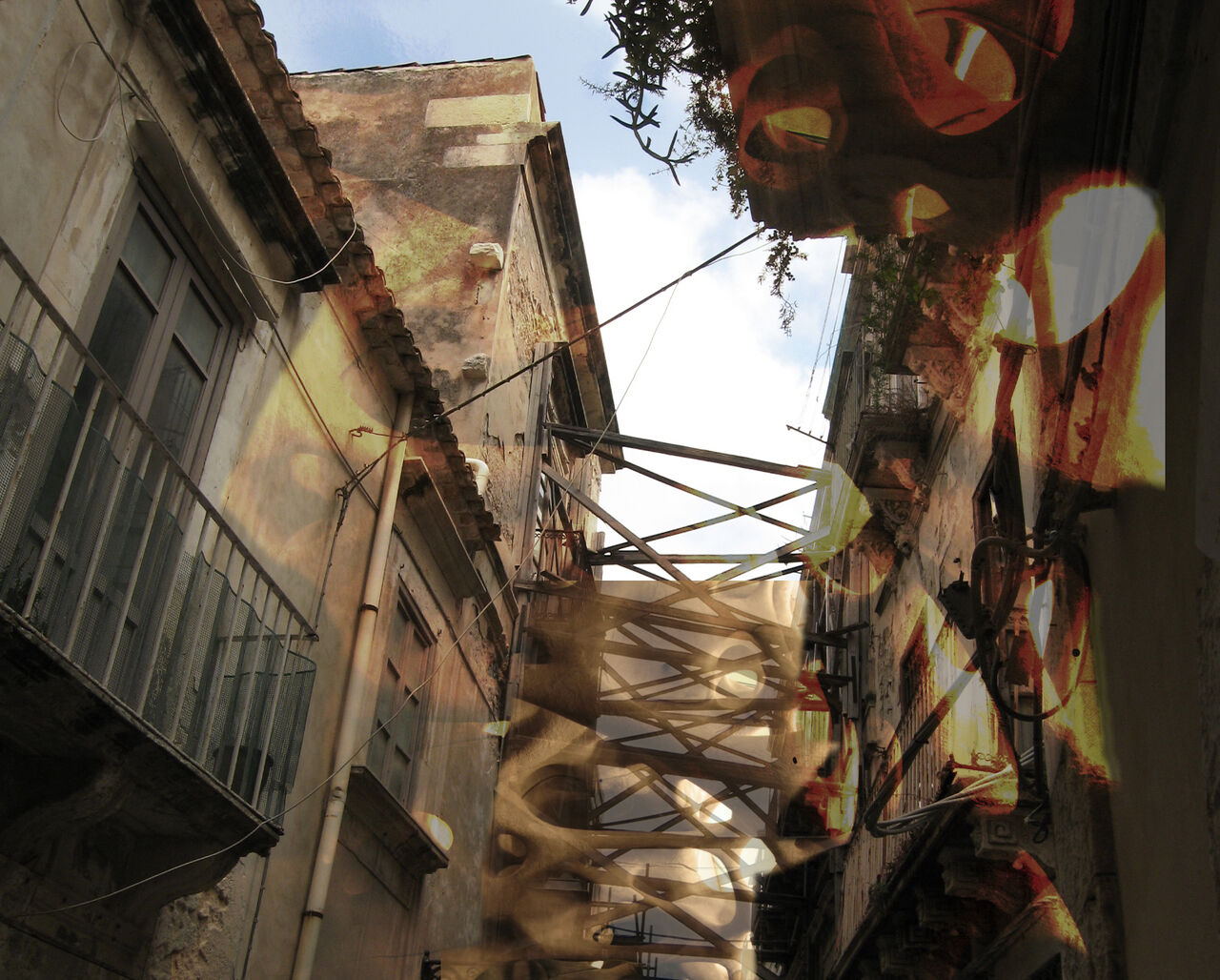 Sketch for the groWorld augmented reality environment, FoAM, Brussels 2003
Sketch for the groWorld augmented reality environment, FoAM, Brussels 2003
Malleable Spaces: Translation and Allergy
How can we construct alternate forms of public social action in our contemporary mixed architectures built out of computation, digital media and steel? What are some techniques appropriate to such hybrid architecture?
If language is the appropriate medium of public activity, then a multilingual translation becomes all-important. Translation, the holy grail of artificial intelligence is a living process. Could translation become an organism living inside the public spaces online, alongside more automated processes? Multiplex Translations | Entangled Aphasia
When thinking about the immunological aspects of autopoietic systems, students of living and techno-scientific entities saw that the Internet could not be transparent any more than an organism could live without skins. Plagued by spam messages, Internet Service Providers grew spam filters and firewalls like skin to protect their members. But perhaps now we can build a more subtle form of immune system, that lives in the interstitial fluid inside and outside our hybrid bodies. An immune system that doesn't simply destroy or eject alien objects, but modifies the habits of the body in order to accommodate the presence of other living processes.
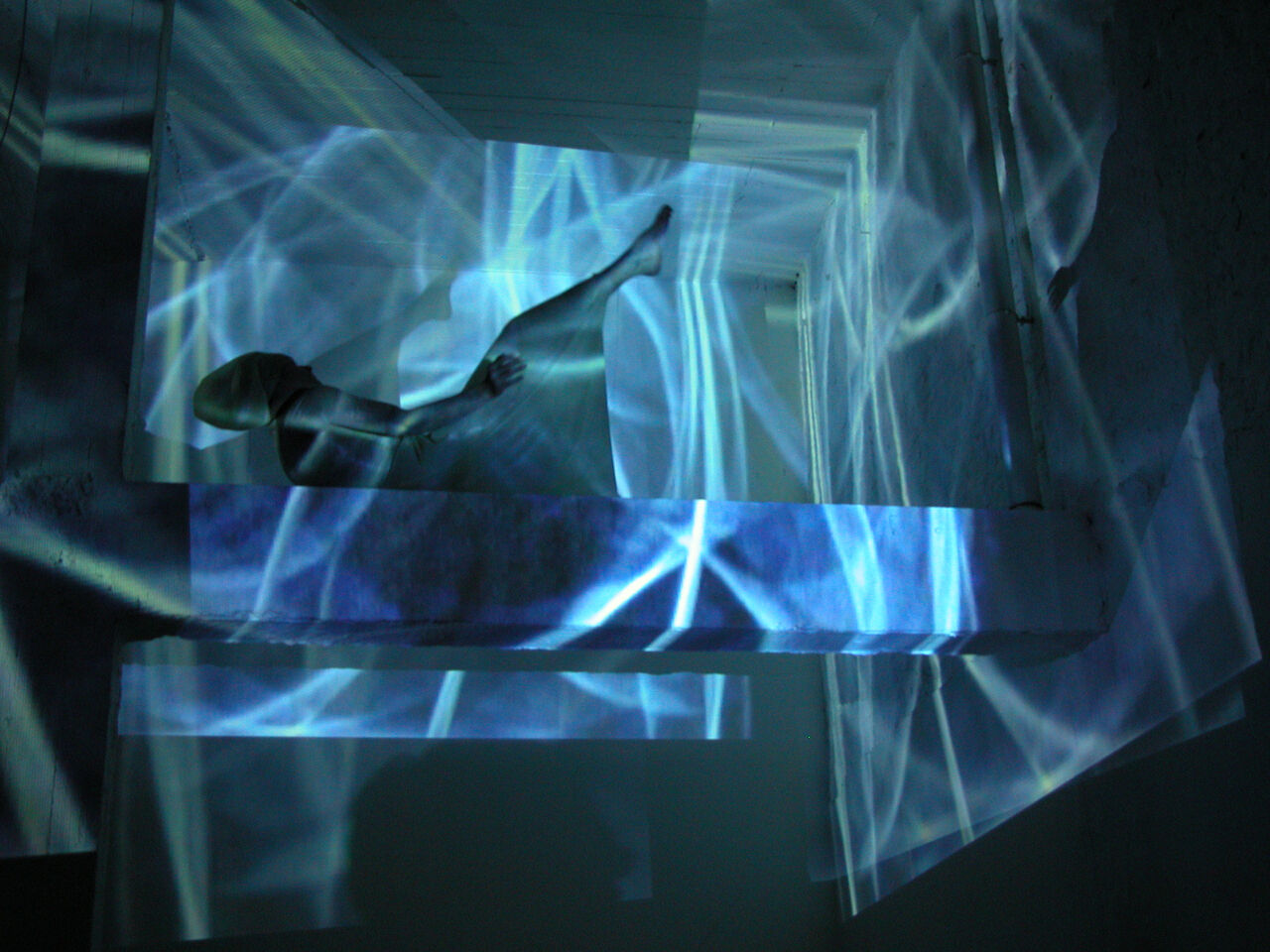 Exercises in Colloquial Luminescence #1, Ebb and Flow of Stubborn Matter, with Isabel Rocamora and Camila Valenzuela, FoAM Studio, Brussels, 2003
Exercises in Colloquial Luminescence #1, Ebb and Flow of Stubborn Matter, with Isabel Rocamora and Camila Valenzuela, FoAM Studio, Brussels, 2003
Static Space to Elastic Space to Responsive Space
Public space should be heterogeneous and polyphonic. Its totality cannot be grasped in any one schema. The inhabitants of a medieval market could make sense of their environment despite the lack of fixed total schema. Braudel remarked that in XIV century Paris, servants gauged when to rush out into the market not by watching clocks (which didn't exist) but by attending to the varying quality of the mixed roar of vendors and hawkers voices as they entered the streets of the city.
How can we achieve such collective intuition and pliability in today's technologically mediated public spaces? What is the stuff, the fabric of society that we wish to make elastic? This includes the communication networks, the flow of information, systems of identification, systems of access to credit. What elasticity means must be worked out in the course of playing the games of communicating, identifying, buying and borrowing.
Designing elasticity into public domain applies to the computational as well as the physical. This places the emphasis on transformation, rather than object. It is essential that we carry the design of public space not as a purely cybernetic, computational design, but as a design of material, built, inhabited environment, which is partially augmented by computational processes. Such environments will become not only elastic but responsive spaces. Through the Shimmering Irreal
If we, the inhabitants of these elastic, responsive, computationally augmented public spaces wish to take responsibility for the shape and the behaviour of these environments, we will have to engage in experiments in real-time and in real-life. We will have to take these spaces apart and reconstruct them many times and across multiple cultural contexts.
A few suggestions to experiment with:
- Construct live spaces from the detritus of a "dead" public space, like abandoned urban, rural or industrial areas For example, Natural Academy
- Cultivate a network of public gardens and inhabit them not only with the local bio-diversity, but with trans-local arts and media For example, groWorld.
- Organise itinerant media festivals taking place in the gardens and allotments instead of in convention centres For example, Borrowed Scenery
- Turn parking lots into parks using biological and digital means For example, Parking Space Events, Pop-up Parks
- Construct an alchemical field in which the participants can instigate processes of transformation and transmutation; work with heat as pliable media, transform clothing into dance-writing For example: TGarden
- Build a media sauna in which people sweat out the toxic icons, dead metaphors and routinized lingo For example, Sauna #1
- Prototype alternative forms of continuous, intuitive interaction between the physical and the digital. For example: trg
- Stretch digital media from the computer into the physical world, inflating the two-dimensionality of the digital into the three-dimensionality of physical public spaces... For example: tx0om
...a secret theatre, in which both artist & audience have completely disappeared – only to reappear on another plane, where life & art become the same thing, the pure giving of gifts.Hakim Bey
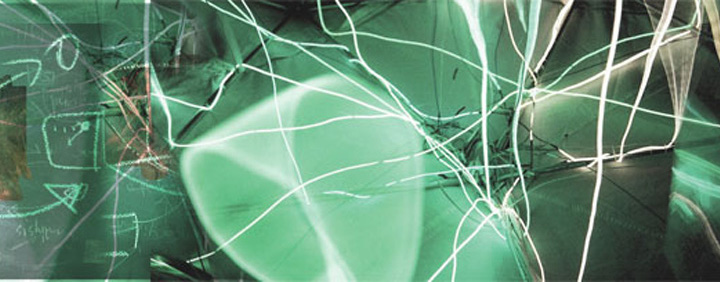 groWorld Bunker, Burning Man, Black Rock City, Nevada, USA, 2000
groWorld Bunker, Burning Man, Black Rock City, Nevada, USA, 2000
𝚫